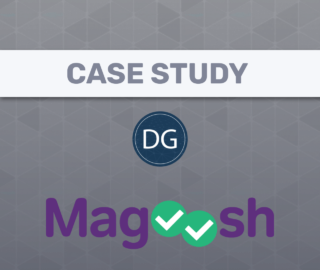
Tech Provider: Lexalytics – A natural language processing and text analytics software and service provider.
Client Company: Voziq – Offers software to help customers reduce churn and gain insight on their customers.
Industry: Media
Function: Business intelligence and analytics, Process automation
Tech Provider Contact: Charles Le Gros
Problem
Viziq is responsible for help call centers with customer service and churn reduction solutions. The firm wanted to improve its ability to predict churn for its clients by gaining real-time insight into customer-generated input.
In this case “customer-generated input” is anything occurring in the moment – it’s real-time info from chat, email, phone conversations. Much of Voziq’s business focuses on call center management and handling phone conversations.
Actions Taken
Voziq uses Lexalytics to analyze the CRM text comments entered by call center agents at the end of calls. Semantria categorizes these comments to specific inquiry “buckets” such as billing issues, product issues, service delays. Lexalytics claims that the system can also detect references to competitors, or inquiries about client contracts.
Voziq uses these insights to better predict churn, and to gain a more rich picture of customer inquiries and sentiment – tying them directly to customer retention behavior.
Lexalytics that it’s total integration time with Voziq was 7 days.
Results
Lexalytics claims that – at the time of this case study’s recording (2016), Voziq was processing 1 million documents per day.
In this case, a “document” represents any individual API call at any level of granularity. This could be a chat transcript line by line, that would be a bunch of different documents. It could be the whole convo at once as one “document” to get the general sentiment of the entire piece. It depends on the granularity needed for that particular business need.
Lexalytics tells us that Voziq claims it is now able to drive 2x faster churn reduction for its clients thanks to the implementation of Semantria. With thousands of customers retained (as of 2016) thanks to Semantria, VOZIQ was able to retain millions of dollars in revenues for its clients. Upon asking Lexalytics for clarity on this “2x faster churn” claim made by Voziq, they responded:
This means that it takes half of the original amount of time to recommend customers what to do. Before text analytics, a client would come to Voziq and tell them that they need to reduce churn, and reaching that churn reduction goal would take a certain amount of time. It is now about half of what it used to be for that same use-case.
Transferrable Lessons
Businesses with recurring revenue models need to focus on retention as much as possible. Even small increases in retention can often lead to large financial returns for a subscription business. Call center applications (which seem to comprise a bulk of Voziq’s use of natural language processing) are just one of many channels of insight that could help in reducing churn, for example:
- A telecommunications business might notice common patterns of words and phrases used in chat conversations that seem to lead to customer churn. Customers using this kind of language might be responded to with more attention, or with an explicitly “retention-first” care strategy or marketing strategy to hedge against their risk of leaving.
- A B2B SaaS company might notice that certain sentiment and phrases used on customer support calls was indicative of the likelihood of that use remaining a customer for another one year or more. In this case, again, a firm using natural language processing might train an AI system to detect those “at risk” callers and address their needs deeply to hedge against churn.







